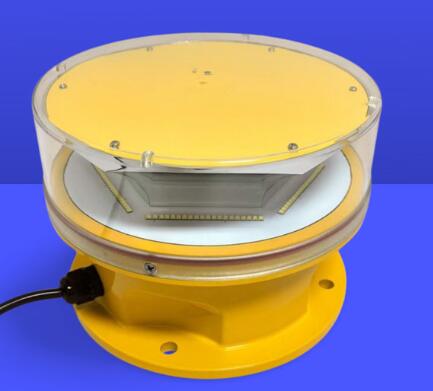Aircraft Warning Lights for Buildings: Ensuring Safety in Urban Skylines
As cities grow taller and skyscrapers dominate urban landscapes, the need for effective aircraft warning lights for buildings has become increasingly critical. These lights are essential for ensuring the safety of aircraft navigating through densely populated areas, particularly during nighttime or in poor visibility conditions. This article explores the importance of aircraft warning lights for buildings, the technologies driving their evolution, and the challenges and trends shaping their future.
The Role of Aircraft Warning Lights for Buildings
Aircraft warning lights for buildings serve as a visual alert system for pilots, helping them identify tall structures and avoid collisions. These lights are typically installed on rooftops, facades, or other elevated parts of buildings, and they must comply with strict aviation regulations regarding brightness, color, and flash patterns. Without these lights, skyscrapers and other tall structures could pose significant risks to low-flying aircraft, especially during takeoff and landing.
Key Features of Modern Aircraft Warning Lights
High-Intensity LED Technology
Modern aircraft warning lights for buildings increasingly rely on LED technology. LEDs offer several advantages over traditional incandescent bulbs, including higher energy efficiency, longer lifespan, and greater brightness. These lights are capable of producing intense, focused beams that can be seen from miles away, ensuring maximum visibility for pilots.

Dual Lighting Systems
Many buildings now use dual lighting systems that combine low-intensity lights for daytime use and high-intensity lights for nighttime or low-visibility conditions. This approach not only conserves energy but also ensures compliance with aviation regulations, which often require different light intensities depending on the time of day.
| aircraft warning lights for buildings |
Automated Control Systems
Advanced control systems are being integrated into aircraft warning lights for buildings to enhance their functionality. These systems can automatically adjust light intensity based on ambient conditions, such as sunlight or fog, and can send alerts when maintenance is required. Some systems even allow remote monitoring and control, enabling building managers to ensure compliance and address issues promptly.
Aesthetic Integration
While safety is the primary concern, architects and building designers are increasingly focusing on integrating aircraft warning lights into the overall aesthetic of the structure. Sleek, low-profile designs and customizable lighting patterns allow these lights to blend seamlessly with the building's architecture, enhancing its visual appeal without compromising safety.
| aircraft warning lights for building |
Challenges in Implementing Aircraft Warning Lights for Buildings
Regulatory Compliance
One of the biggest challenges in installing aircraft warning lights for buildings is ensuring compliance with aviation regulations. These regulations vary by country and region, and they often require detailed documentation and regular inspections. Non-compliance can result in fines, legal liabilities, and increased risks to aviation safety.
Maintenance and Accessibility
Maintaining aircraft warning lights on tall buildings can be logistically challenging and costly. Technicians often require specialized equipment, such as cranes or drones, to access and service these lights. Additionally, the lights must be regularly inspected and cleaned to ensure optimal performance, which can be time-consuming and expensive.
Energy Consumption
While LED technology has significantly reduced energy consumption, aircraft warning lights for buildings still require a reliable power supply. In some cases, backup power systems, such as batteries or generators, are necessary to ensure continuous operation during power outages.
Public Perception
Some building owners and residents may view aircraft warning lights as intrusive or unattractive. Balancing safety requirements with aesthetic considerations is a constant challenge, particularly in residential or historic areas where visual impact is a concern.
Emerging Trends in Aircraft Warning Lights for Buildings
Solar-Powered Solutions
To address energy consumption concerns, some buildings are adopting solar-powered aircraft warning lights. These systems use solar panels to generate electricity during the day, which is stored in batteries for use at night. This approach not only reduces energy costs but also enhances sustainability.
Smart Lighting Systems
The integration of smart technology is transforming aircraft warning lights for buildings. Smart lighting systems can monitor environmental conditions, adjust light intensity automatically, and provide real-time data on performance and maintenance needs. These systems can also be integrated with building management systems for centralized control.
Enhanced Durability
Advances in materials science are leading to the development of more durable aircraft warning lights. For example, lenses made from advanced polymers or nanocomposites are more resistant to UV radiation, scratches, and environmental wear, reducing the need for frequent replacements.
Drone-Assisted Maintenance
Drones are increasingly being used for the inspection and maintenance of aircraft warning lights on tall buildings. Equipped with cameras and sensors, drones can quickly assess the condition of lights and identify issues without the need for human climbers or heavy equipment, reducing costs and improving safety.
Aircraft warning lights for buildings play a vital role in ensuring the safety of urban airspace. As cities continue to grow vertically, the demand for effective, efficient, and aesthetically pleasing lighting solutions will only increase. By embracing new technologies, addressing challenges, and adhering to regulatory standards, building owners and operators can ensure that their structures remain safe and compliant while contributing to the overall safety of the aviation ecosystem. The future of aircraft warning lights for buildings lies in innovation, sustainability, and seamless integration with the urban environment.
